-
-
Out of stock
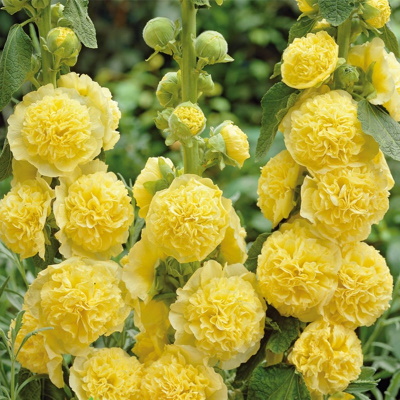 Perennial, grows 150-250cm tall. Large, yellow, double flowers collected in giant inflorescences. Blooms in the second year from July. Use for group plantings, borders, and cutting.
Perennial, grows 150-250cm tall. Large, yellow, double flowers collected in giant inflorescences. Blooms in the second year from July. Use for group plantings, borders, and cutting. -

Clematis-flowered columbine. Fluffy, star-shaped blooms with pointed, overlapping petals resemble petite clematis flowers. Fully double 3-4 cm upward-facing and nodding, spurless flowers. Blooms late spring of the second year from a spring sowing. An excellent cut flower, it has strong, straight stems and fills the gap between early spring and summer bouquets. Produces multiple blooms per stem. The mix includes Victorian shades in a complementary color palette: rose, almost black, violet, deep wine red, dark purple, white, and purple-edged white. Attracts hummingbirds.
-
Out of stock
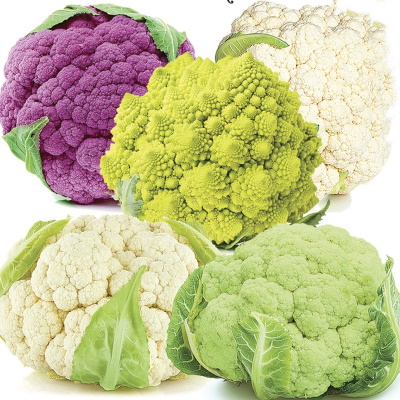 Mid-season variety. Growing period 100-120 days. Rounded head, large, purple-violet, well covered with leaves. Growth up to 1-1.5 kg with a great taste. The variety is resistant to bacterial diseases. It is recommended for cultivation in open field and greenhouses.
Mid-season variety. Growing period 100-120 days. Rounded head, large, purple-violet, well covered with leaves. Growth up to 1-1.5 kg with a great taste. The variety is resistant to bacterial diseases. It is recommended for cultivation in open field and greenhouses. -
Out of stock
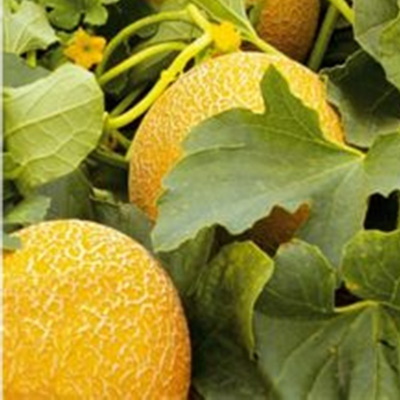 Mid-season (80-85 days) Heirloom variety. Very delicious yellow-orange melons with white, crispy, juicy, and very sweet flesh, weight 2.5-3kg (5.5-6.5 lbs.). Variety has good resistance to diseases. Use fresh.
Mid-season (80-85 days) Heirloom variety. Very delicious yellow-orange melons with white, crispy, juicy, and very sweet flesh, weight 2.5-3kg (5.5-6.5 lbs.). Variety has good resistance to diseases. Use fresh. -
Out of stock
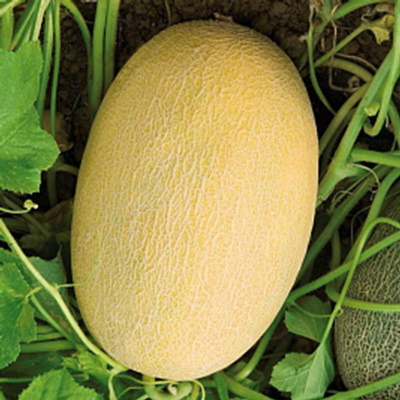 Mid-season (70-80 days) heirloom variety. Elliptical, orange-yellow melons with a large, dense mesh, weight 1.5-3kg. Creamy, thick, tender very juicy, and sweet flesh with an excellent taste. Keeps quality up to 30 days after harvest.
Mid-season (70-80 days) heirloom variety. Elliptical, orange-yellow melons with a large, dense mesh, weight 1.5-3kg. Creamy, thick, tender very juicy, and sweet flesh with an excellent taste. Keeps quality up to 30 days after harvest. -
Out of stock
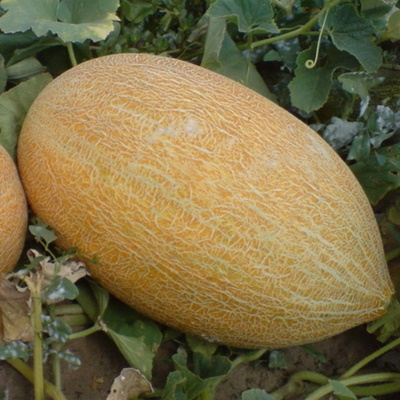 Early variety (70-75days). The fruit is oval, yellow colour, weight 2.1-3.6 kg. Pulp white, sometimes tinged with green near the skin, dense, thick, crispy, tender, sweet, with a strong aroma. The variety is resistant to disease.
Early variety (70-75days). The fruit is oval, yellow colour, weight 2.1-3.6 kg. Pulp white, sometimes tinged with green near the skin, dense, thick, crispy, tender, sweet, with a strong aroma. The variety is resistant to disease. -
Out of stock
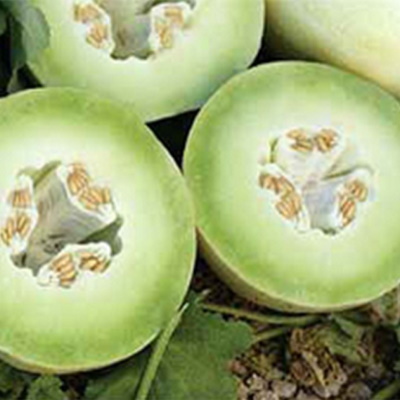 A very old honey melon, known as Honey Dew, originated in Central Asia, was grown in France for a long time, was introduced to the United States in the 1900s, and to China in the 1940s. Melon with a very smooth surface and durable skin, when maturing from pale green to ivory, with gold. The seed chamber is very small. The white-green, juicy flesh has incredible sweetness and a delicious aroma. Melons weighing up to 3 kg (6.5lbs), ripen 65-75 days after germination. Does not crack and is well storable.
A very old honey melon, known as Honey Dew, originated in Central Asia, was grown in France for a long time, was introduced to the United States in the 1900s, and to China in the 1940s. Melon with a very smooth surface and durable skin, when maturing from pale green to ivory, with gold. The seed chamber is very small. The white-green, juicy flesh has incredible sweetness and a delicious aroma. Melons weighing up to 3 kg (6.5lbs), ripen 65-75 days after germination. Does not crack and is well storable. -
Out of stock
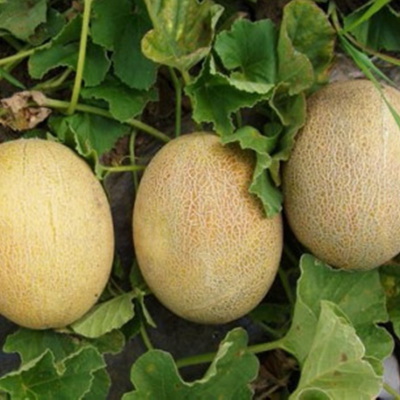 Early maturing variety (65-75 days). Fruits are oval, weight 2-2.5 kg, yellow. The flesh is white, juicy, very sweet, and aromatic.
Early maturing variety (65-75 days). Fruits are oval, weight 2-2.5 kg, yellow. The flesh is white, juicy, very sweet, and aromatic. -
Out of stock
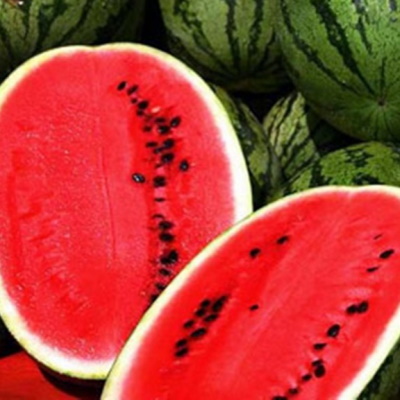 Mid-season variety 78-86 days. Round, smooth, green fruits with a dark green pattern. Very sweet, red, granular, and juicy flesh. Average weight 4.5 kg. Resistant to fusarium wilt and anthracnose.
Mid-season variety 78-86 days. Round, smooth, green fruits with a dark green pattern. Very sweet, red, granular, and juicy flesh. Average weight 4.5 kg. Resistant to fusarium wilt and anthracnose. -
Out of stock
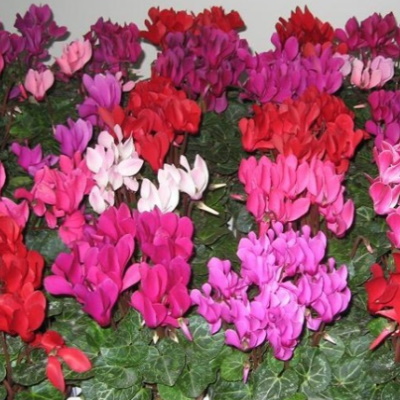 Recommended for windows and greenhouses. Perennial flowering plant grows up 20-30 cm height. Solitary, drooping flowers in a great variety of bright colours. Blooms in the autumn-winter period. During flowering, the plant needs bright diffused light, regular watering, and a temperature between 12-17 C
Recommended for windows and greenhouses. Perennial flowering plant grows up 20-30 cm height. Solitary, drooping flowers in a great variety of bright colours. Blooms in the autumn-winter period. During flowering, the plant needs bright diffused light, regular watering, and a temperature between 12-17 C -
Out of stock
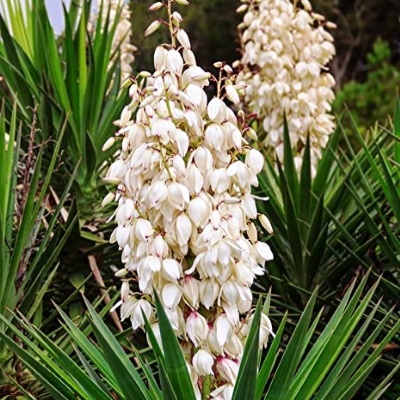 Easily grown in light, dry to medium, well-drained soils in full sun. Tolerant of poor, sandy soils, heat, drought, and salt spray. Surprising tolerance for some part shade. Can be propagated easily from basal offsets.
Easily grown in light, dry to medium, well-drained soils in full sun. Tolerant of poor, sandy soils, heat, drought, and salt spray. Surprising tolerance for some part shade. Can be propagated easily from basal offsets.Noteworthy Characteristics
Yucca filamentosa, commonly called Adam’s needle, Spanish bayonet, yucca and needle palm, is a virtually stemless broadleaf evergreen shrub (though it looks more like a perennial than a shrub) that is native to beaches, sand dunes and fields from South Carolina south to Florida and Mississippi. It has escaped cultivation and extended its original range north into New England. It features a basal rosette of rigid, sword-shaped, spine-tipped green leaves (to 30” long and to 4” wide) with long filamentous (as per specific epithet) curly threads along the margins. Leaves form a foliage clump to 2-3’ tall. In late spring, a flowering stalk rises from the center of each rosette, typically to 5-8’ tall, but infrequently to 12’ tall, bearing a long terminal panicles of nodding bell-shaped creamy white flowers. Fruits are elliptical dehiscent capsules. Will form a small colony over time from basal offsets. Genus name comes from the Carbi name for manihot, also called cassava or yuca, which is not closely related but has similarly enlarged root structures. Specific epithet means with filaments or threads.
